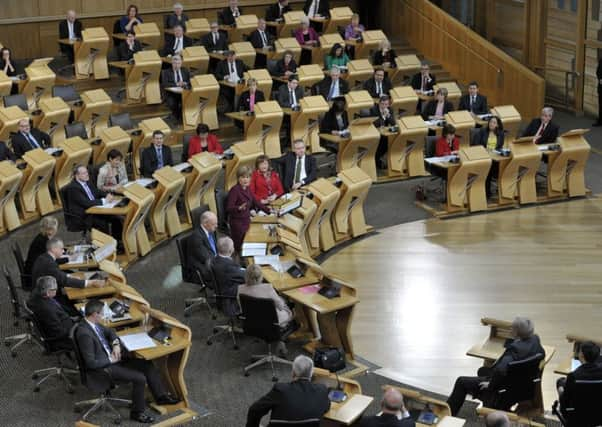Scott Macnab: Holyrood set for shake-up in 2016


When leaders and parties get down to making their resolutions for the year ahead, the Scottish Parliament elections in May are likely to dominate. For Nicola Sturgeon and the SNP, winning another Holyrood majority must be an imperative. Given the tide of popular support she currently enjoys, Ms Sturgeon seems destined to increase her majority. Having inherited the post of First Minister, she will also been keen to win her own mandate at the ballot box. Scottish politics, though, is nothing if not fickle. Just two months before the last Holyrood election Labour enjoyed a double-digit lead in the polls and Iain Gray seemed destined for Bute House, before a remarkable turnaround saw Alex Salmond triumph. But despite real domestic problems over issues like education, NHS waiting times, and Police Scotland, none of the opposition flak appears to stick on the SNP – for now.
And this is partly down to the perceived lack of a credible alternative at Holyrood. Where once Labour was the dominant behemoth of Scottish politics, recent years have seen the party struggle to effectively fulfil the role of official opposition. The leadership turmoil at the helm of the Scottish party – which has seen three different leaders since the last Holyrood elections – has not helped. Current incumbent Kezia Dugdale has proven herself one of the most effective performers among post-devolution Labour leaders in the weekly bearpit of First Ministers Questions. But the 34-year-old struggles to shake off the sense that the burden of leadership has come too soon – although Jim Murphy’s departure left her little option but to take it on.
Advertisement
Hide AdAdvertisement
Hide AdIn fairness Scottish Labour has looked stronger in recent months, taking ministers to task over areas where the government is weak. The challenge for Labour will be to somehow keep the Holyrood campaign focussed on these issues and shift voters’ decisions away from the constitution. The stakes could not be higher.
This election is a staging post in Labour history in Scotland. With polls suggesting the party may struggle to win a single constituency seat, Ms Dugdale faces a desperate fight to keep its head above water as an effective political force.
For Ruth Davidson and the Conservatives, it is another crucial year. After a strong showing in the independence referendum and general election, as well as glowing personal plaudits, the pressure is now on for her to show that she can actually deliver success at the ballot box. Her predecessor Annabel Goldie was also personally popular – but kept losing seats. It’s time now for Ruth to show that she can finally arrest the Tory decline in Scotland. It may not prove the end for her leadership, but failure to make a breakthrough may indicate she’s not the leader in longer term to revive the party’s fortunes north of the Border.
The Liberal Democrats are in a similar position to Labour – except their aim will be to avoid total wipeout. But it doesn’t look good and even the party’s last stronghold in Shetland and Orkney could be under threat after the controversy surrounding the Alistair Carmichael trial and the bad taste it will have left for many voters. The Greens are poised to capitalise with encouraging poll ratings and there is also the potential emergence of a left-wing alternative at Holyrood if the Rise Coalition can win seats. It could be that Scotland’s political map is poised to be radically redrawn again.